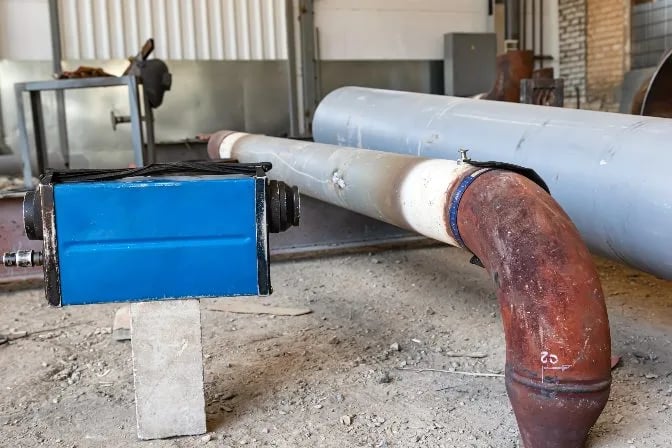Comprehensive Review of Pipeline Welding Evaluation Treatments
In the realm of pipeline building and construction, guaranteeing the integrity and safety of bonded joints is paramount. Pipeline welding evaluation treatments play an essential function in ensuring that welded links satisfy rigorous sector criteria and specs. From careful pre-welding assessments to extensive post-weld evaluations, a distinct inspection procedure is essential for preserving the architectural strength of pipelines. Understanding the intricacies of welding inspection procedures is not just a governing demand however also a fundamental aspect of upholding the integrity of these important facilities.
Pre-welding Evaluation Preparations
Prior to beginning the welding procedure, extensive pre-welding evaluation preparations are necessary to ensure the stability and quality of the weld joint. These prep work involve a careful examination of the products to be welded, the welding tools, and the job setting. The materials should be evaluated for any type of issues, pollutants, or incongruities that could compromise the weld. This includes checking for proper material grades, dimensions, and surface conditions. Pipeline Welding Inspection. Furthermore, the welding devices requires to be evaluated to validate that it is in great working condition, adjusted properly, and suitable for the particular welding procedure. Any type of concerns with the tools must be addressed promptly to stop issues in the weld. The job environment should be examined for cleanliness, appropriate air flow, and security measures to make certain a conducive setting for the welding operation. By performing extensive pre-welding assessment preparations, possible concerns can be identified and resolved beforehand, bring about premium and trusted weld joints.
Welding Procedure Qualification
Detailed pre-welding examination prep work lay the structure for the important procedure of Welding Procedure Credentials, making certain the integrity and top quality of the weld joint. Welding Procedure Qualification (WPQ) is an essential action in the welding procedure that includes screening and certifying welding treatments to guarantee they satisfy certain requirements and requirements. The WPQ procedure commonly consists of welding procedure spec growth, welding procedure credentials screening, and documentation of the outcomes.
Throughout welding treatment specification advancement, crucial details such as the welding process, welding products, joint layout, and welding parameters are defined to develop a thorough treatment. Ultimately, welding procedure qualification screening is carried out to validate the suggested procedure's stability. This testing usually involves welding examination coupons that are subjected to different mechanical and non-destructive tests to evaluate the weld's high quality and adherence to the defined requirements.
In-process Weld Inspection
During the welding procedure, in-process weld examination plays a vital duty in guaranteeing the high quality and stability of the weld joint - Pipeline Welding Inspection. This kind of examination includes keeping an eye on the welding specifications, examining the weld grain formation, and detecting any kind of prospective flaws or interruptions as they take place. By carrying out in-process weld examinations, welding drivers can immediately attend to any type of issues that may develop, consequently stopping further defects and ensuring that the final weld satisfies the needed requirements
Usual methods made use of for in-process weld inspection include visual assessment, fluid penetrant testing, magnetic bit screening, ultrasonic testing, and radiographic screening. In general, in-process weld examination is important for keeping the top quality and integrity of welded pipelines.
Non-destructive Testing (NDT)
Non-destructive Screening (NDT) is a crucial technique utilized in pipe welding inspection this website to examine the integrity of weld joints without causing damage to the bonded framework. By using different NDT strategies, assessors can assess the quality of welds and identify any problems or interruptions that may jeopardize the architectural soundness of the pipeline. Common NDT methods used in pipe welding inspection include Radiographic Testing (RT), Ultrasonic Testing (UT), Magnetic Particle Checking (MPT), Fluid Penetrant Screening (LPT), and Visual Screening (VT)
RT includes the use of X-rays or gamma rays to produce photos of the interior structure of the weld, permitting inspectors to identify issues such as porosity, fractures, or incomplete blend. Furthermore, VT includes visual examination of welds to determine any noticeable flaws.
Post-weld Examination and Documentation

Documentation of post-weld inspection searchings for is important for keeping quality assurance documents and guaranteeing compliance with sector standards and laws. Comprehensive records ought to include information about the inspection methods utilized, the place and nature of any kind of flaws discovered, and any kind of restorative activities taken - Pipeline Welding Inspection. Correct paperwork not just functions as a document of the weld's top quality but likewise help in future maintenance and assessment procedures
Conclusion

Finally, pipe welding inspection procedures play a crucial function in making certain the top quality and integrity of welds. From pre-welding inspections to post-weld documentation, each action is essential in keeping the safety and security and performance of pipelines. By adhering to well-known treatments and conducting thorough evaluations, prospective defects can be recognized and addressed prior to they cause pricey repair work or failings. Generally, adherence to appropriate inspection methods is essential to the success of pipeline welding jobs.
From precise pre-welding evaluations to comprehensive post-weld evaluations, a well-defined evaluation process is important for maintaining the structural soundness of pipelines. By conducting in-process weld inspections, welding drivers can without delay resolve any type of problems that might develop, consequently stopping additional problems and ensuring that the final weld meets the required specs.
Common approaches made use of for in-process weld assessment include visual inspection, fluid This Site penetrant screening, magnetic particle screening, ultrasonic testing, and radiographic screening.Non-destructive Screening (NDT) is an essential approach utilized in pipe welding assessment to assess the honesty of weld joints without causing damages to the welded click here to read framework. Post-weld assessment includes different techniques to analyze the welds for issues, consisting of visual inspection, dye penetrant testing, magnetic bit testing, ultrasonic screening, and radiographic testing.